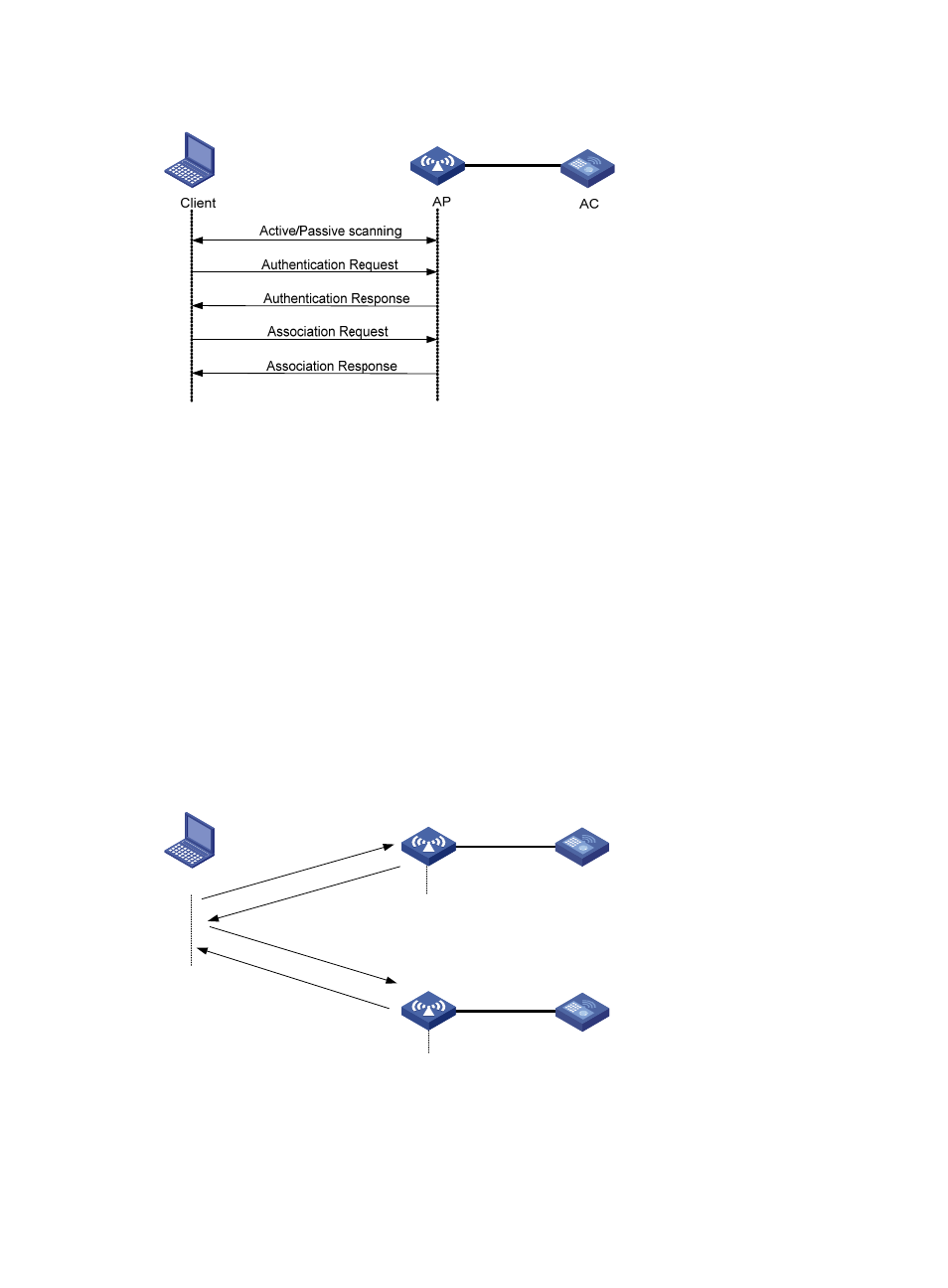Scanning – H3C Technologies H3C WX3000E Series Wireless Switches User Manual
Page 240

224
Figure 211 Establishing a client access
Scanning
Wireless clients can get the surrounding wireless network information in two ways, active scanning and
passive scanning. With active scanning, a wireless client actively sends probe requests during scanning,
and receives probe responses. With passive scanning, a wireless client listens to Beacon frames sent by
surrounding APs.
A wireless client usually uses both passive scanning and active scanning to get information about
surrounding wireless networks.
1.
Active scanning
When a wireless client operates, it periodically searches for (that is, scans) surrounding wireless
networks. Active scanning falls into two modes according to whether a specified SSID is carried in
a probe request.
•
Mode 1—A client sends a probe request without any SSID on supported channels to scan wireless
networks. APs that receive the probe request frame send a probe response frame. The client
associates with the AP with the strongest signal.
Figure 212 Active scanning (no SSID in the probe request)
•
Mode 2—When a wireless client is configured to access a specific wireless network or has already
been connected to a wireless network, the client periodically sends a probe request carrying the
specified SSID. When an AP that can provide the wireless service with the specified SSID receives
the probe request, it sends a probe response. This active scanning mode enables a client to access
a specified wireless network. The active scanning process is as shown in
AP 2
Client
AP 1
Prob
e req
uest
(wit
h no
SSI
D)
Probe r
equest
(with no
SSID)
Probe r
espons
e
AC 1
AC 2
Prob
e res
pons
e